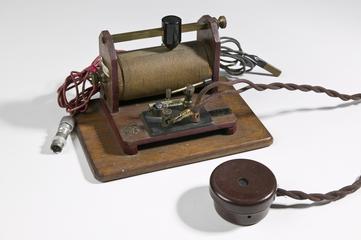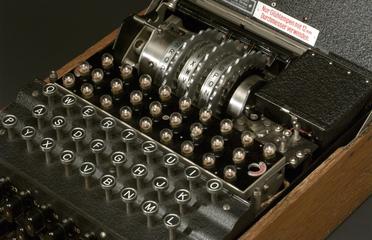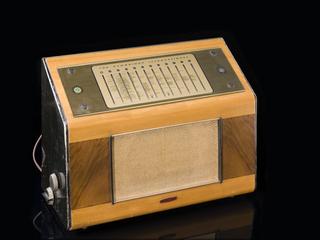
Three-valve low-frequency C Mark II No. 1 amplifier, 1916-1918
Three-valve low-frequency Amplifier C Mark II No. 1 from First World War - introduced in 1916/1917. It consisted of the orthodox connections for such an amplifier with the addition of one joining the H.T. positive terminal to a point on the primary winding of the first transformer. This connection was introduced to stabalise the instrument, which tended to self-oscillation. The primary winding of the input transformer had six tappings to enable the impedance of this winding to be adjusted to suit impedance of the circuit to which it is connected.
The telephone receivers were connected in the anode circuit of the last valve through the medium of a telephone transformer.
The right-hand switch is for the simultaneous adjustment of the filament currents of the three valves.
The input connections were normally marked L1 and L2. It had two controls: a studded input impedance switch and a rheostat knob for filament voltage control.
More
Amplifier C Mark II was an early three-valve low-frequency audio-frequency amplifier designed during the First World War and used to amplify audio from a receiver with a detector. Audio requiring amplification included earth current signals and 'listening in' to enemy telephone conversations etc. Introduced sometime between 1916 (when Mark I was introduced) and 1917 (when Mark III was introduced).






